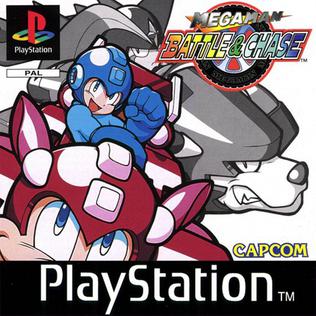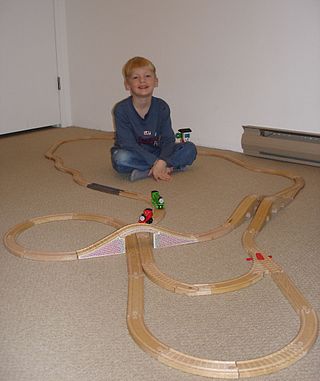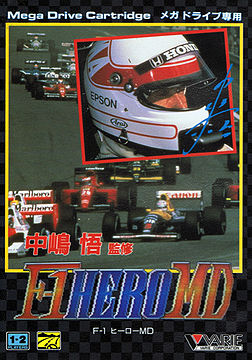Mario Kart is a series of kart racing games based on the Mario franchise developed and published by Nintendo. Players compete in go-kart races while using various power-up items. It features characters and courses mostly from the Mario series as well as other gaming franchises such as The Legend of Zelda, Animal Crossing, F-Zero, Excitebike, and Splatoon.

Super Mario Kart is a kart racing game developed and published by Nintendo for the Super Nintendo Entertainment System (SNES). The first game in the Mario Kart series, it was released in Japan and North America in 1992, and in Europe the following year in 1993. Selling 8.76 million copies worldwide, the game went on to become the fourth best-selling SNES game of all time. Super Mario Kart was re-released on the Wii's Virtual Console in 2009, on the Wii U's Virtual Console in 2013, and on the New Nintendo 3DS's Virtual Console in 2016. Nintendo re-released Super Mario Kart in 2017 as part of the company's Super NES Classic Edition.

Mario Kart 64 is a 1996 kart racing game developed and published by Nintendo for the Nintendo 64 (N64). It is the second main entry in the Mario Kart series and is the successor to Super Mario Kart (1992) for the Super Nintendo Entertainment System. It was released in Japan on December 14, 1996, and in North America and Europe in 1997. It was released for the iQue Player in China on December 25, 2003. It was released on the Wii's and Wii U's Virtual Console in 2007 and 2016, and on the Nintendo Switch Online + Expansion Pack on October 25, 2021.

Pokémon Stadium 2, known in Japan as Pokémon Stadium Gold & Silver, is a strategy video game developed and published by Nintendo for the Nintendo 64. It features all 251 Pokémon from the first and second generations of the franchise. It was released in Japan on December 14, 2000, in North America on March 26, 2001, and in Europe on October 10, 2001. In Western regions it was titled Pokémon Stadium 2, as it was the second Stadium game to be released outside Japan, in which it was the third game in the series. It supports Dolby Surround sound.

Crash Team Racing is a 1999 kart racing video game developed by Naughty Dog and published by Sony Computer Entertainment for the PlayStation. It is the fourth installment in the Crash Bandicoot series. The game's story focuses on the efforts of Crash Bandicoot, Doctor Neo Cortex, and other ragtag team of characters in the Crash Bandicoot series, who must race against the egomaniacal Nitros Oxide to save the Earth from destruction. In the game, players can take control of one of fifteen Crash Bandicoot series characters, though only eight are available at first. During the races, offensive and speed boosting power-ups can be used to gain an advantage.

Gran Turismo 4 is a 2004 sim racing video game developed by Polyphony Digital and published by Sony Computer Entertainment for the PlayStation 2. It is the fourth main installment and the sixth overall in the Gran Turismo series. It was released on December 28, 2004, in Japan and Hong Kong, February 22, 2005, in North America, and March 9, 2005, in Europe, and has since been re-issued under Sony's Greatest Hits brand.

Top Gear Rally is a 1997 racing video game developed by Boss Game Studios and released for the Nintendo 64. A follow-up to Kemco's original Top Gear game, it features a championship mode where a single player must complete six seasons of two to four races, as well as a multiplayer mode where two players may compete against each other via a split-screen display. The game's tracks combine both road and off-road surfaces and can be played in different weather conditions, including night, fog, rain, and snow. Players may customize their car with different tire grips and adjust its suspension stiffness and steering sensitivity. An option that allows players to custom paint their cars is also included.
Densha de Go! is a Japanese train simulation game series originally produced by Taito and more recently by Square Enix and Railfan Holdings Co., Ltd. The series started with a 1996 arcade version and was first released in a home version for the PlayStation in 1997. There are also PC versions released by the Japanese publisher Unbalance. All of the games in the series are exclusively available in Japanese.

Crash Nitro Kart is a 2003 kart racing game for the PlayStation 2, Xbox, GameCube, and Game Boy Advance; versions for the N-Gage and mobile phones were released in 2004. It is the second racing game in the Crash Bandicoot series after Crash Team Racing and the first game in the series to feature full motion videos.

Mega Man: Battle & Chase is a racing video game based on the original Mega Man series from Capcom. The game was released in Japan on March 20, 1997 and in the PAL region on April 3, 1998 for PlayStation. Although it was not released individually in North America, Mega Man: Battle & Chase was featured on the region-exclusive Mega Man X Collection in 2006. Mega Man: Battle & Chase is a traditional racing game with an emphasis on combat. Winning a race allows the player to choose a car part from an enemy competitor as a prize. Reviews for the game have been mixed with many critics drawing comparisons to Nintendo's Mario Kart series.

Densha de Go! 2 Kōsoku-hen is a train simulator. It is part of the Densha de Go! series. It was released in the arcades in Japan in 1998. It was ported to PlayStation, Nintendo 64, WonderSwan, Neo Geo Pocket Color, Windows, Dreamcast, and Game Boy Color. The Nintendo 64 version is titled Densha de Go! 64.

Al Unser Jr.'s Turbo Racing is a racing video game released by Data East for the Nintendo Entertainment System in 1990. It is an adaptation of the 1989 Japanese-market Famicom game World Grand Prix - Pole to Finish, with the most notable changes being the addition of Unser as an in-game coach, the number of laps, sound and interface design. Therefore, the game remains based on the Formula 1 World Championship, despite Unser having never competed in it. This game features a season mode and two time trial modes. In season mode the player uses either Al Unser Jr. or a make-their-own-driver.

Merchandise for the Thomas & Friends franchise has been produced to capitalize on the success of the television series Thomas & Friends. Whilst merchandise was produced alongside due to the popularity of the first of The Railway Series by the Rev. W. Awdry since 1945, and the original broadcast of the television series in 1984 in the United Kingdom, large numbers of manufacturers have sought to produce Thomas-branded items after the television series was broadcast in the United States and Japan.

Mario Kart Wii is a 2008 kart racing game developed and published by Nintendo for the Wii. It is the sixth installment in the Mario Kart series, and was released in April 2008. Like its previous installments, Mario Kart Wii incorporates playable characters from the Mario series, who participate in races on 32 different race tracks using specialized items to hinder opponents or gain advantages. The game features multiple single-player and multiplayer game modes including two- to four-person split screen. Online multiplayer was supported until the discontinuation of Nintendo Wi-Fi Connection in May 2014. Mario Kart Wii uses the Wii Remote's motion-controls to provide intuitive and conventional steering controls. Each copy of the game was bundled with the Wii Wheel accessory to augment this feature and mimic a steering wheel.

Motor Raid (モーターレイド) is a racing video game released by Sega on its Model 2A arcade system board in 1997. In contrast to the realistic style of most of Sega's previous racing games, Motor Raid uses a futuristic aesthetic and gameplay supplemented by fighting elements.

Nakajima Satoru Kanshuu F1 Hero MD is a Formula One video game endorsed by Satoru Nakajima that was released in 1992 for the Mega Drive/Genesis, Nintendo Entertainment System, and Nintendo Game Boy. The North American and European versions of the game are known as Ferrari Grand Prix Challenge in reference to Ferrari, specifically their Formula One team.

F1 Pole Position is a 1992 racing video game for the SNES, developed by Human Entertainment and published by them in Japan, while the other versions were handled by Ubi Soft. It is the first game in the Human Grand Prix/F1 Pole Position series, which features Formula One licensing.
F-1 Spirit is a series of Formula One-based racing video games developed and published by Konami starting on the MSX in 1987.

Crazy Frog Racer is a European and Australian-only video game developed by Neko Entertainment and published by Digital Jesters. A year later in 2006 a sequel was released, entitled Crazy Frog Racer 2.

Densha de Go! is a 1997 train simulator arcade game developed and published by Taito in Japan. Players are tasked with guiding a train to its destination under a time limit while managing its acceleration and speed limitations. It features real-world train stations and train lines from Japan, including the Yamanote Line and Keihin–Tōhoku Line. The game was ported to the PC, Sega Saturn, and PlayStation.

















